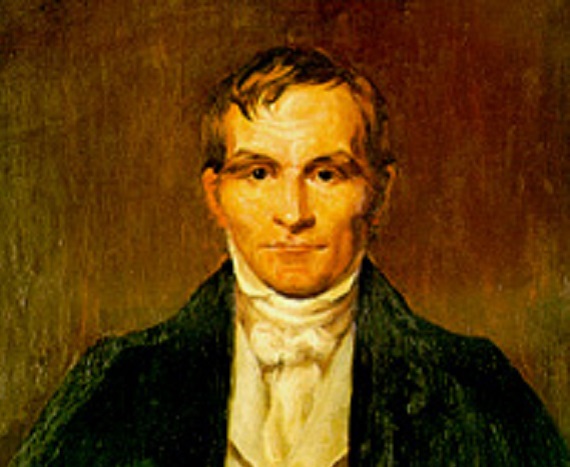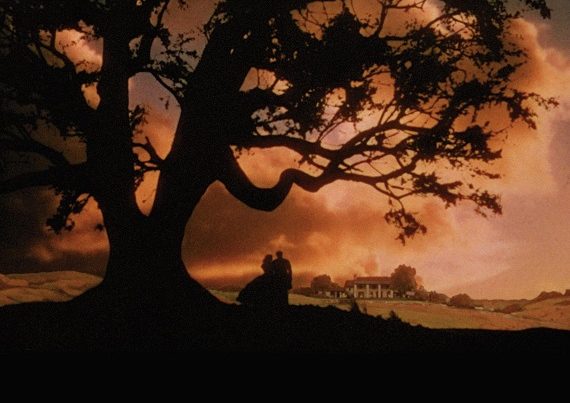William S. Belko, Philip Pendleton Barbour in Jacksonian America: An Old Republican in King Andrew’s Court (The University of Alabama Press, 2016).
Sometimes a professional historian gets it right. William Belko has produced a quality tome that both expands and enhances our understanding of American history. While most academics write about the same subjects and regurgitate fashionable theories with “new” evidence—particularly if such “evidence” supports a cultural Marxist version of the American past—Belko bucks that trend in spades. He not only saves the “obscure” Barbour from the dustbin of history, Belko provides a deeper perspective on Southern society and the political battles of the early nineteenth century. As Belko writes, “Barbour’s political career undeniably demonstrates that subjects of an economic nature, rather than the efficacy and spread of slavery, dominated, determined, and shaped the great political battles and partisan attachments during the formative years of Jacksonian America.” Refreshing.
Belko’s assessment of Barbour’s life and career is more than a political biography. He details the social and cultural environment of Barbour’s Frascati plantation and explains what shaped his political views. Babour was born and bred to be an Old Republican. His father, Thomas Barbour, opposed ratification of the Constitution and stood for election to the Virginia Ratifying Convention in 1788 from Orange County. He was defeated by James Madison. But more than that, Philip Barbour was a Virginian first and foremost, a student of the classics who admired both Greek and Roman history and the English political tradition. He was no simple minded provincial reactionary narrowly focused on race and slavery, for that matter nor were any of the Old Republicans regardless of what most mainstream historians believe. He was both a gifted speaker and a real student of history who had one of the finest libraries in the South. Belko argues that “Barbour became a quintessential Old Republican precisely because of his social surroundings in a county replete with intense Revolutionary Whig and Jeffersonian Republican predilections.” These “Whig and Jeffersonian Republican predilections” included the “Spirit of ’98,” the writings of John Taylor of Caroline, and the speeches of Richard Bland and Patrick Henry.
Belko portrays Barbour as a consistent statesman who never deviated from his Old Republican roots. His speeches against protective tariffs, federally funded internal improvements, and central banking displayed cogency from year to year, and Belko attests led the way in developing the constitutional attack against Henry Clay’s American System and John Marshall’s Supreme Court. Barbour warned that the fusion of “economic and judicial nationalism…threatened American liberty.” The imaginative construction of men like Clay and Marshall would form “a breach…in the Constitution, by which, not only these powers may be let in, but a flood of others, strong enough to break down all the barriers erected to preserve the residuary rights of the States and the People.” Barbour was as prescient as he was principled.
Barbour was also consciously Southern. Belko relays several stories that prove cultural differences between the North and South extended beyond preferred methods of labor. For example, in 1829 Barbour told several fellow Virginians at supper “about the odd names which the New England people give to their children.” This amused him, particularly when the “Congress role was called” for their names were “as wild and uncouth as intoxication or insanity would dictate.” Barbour called the prominent Massachusetts politician Daniel Webster “a cold uninteresting speaker” who “felt nothing” because “he was always cold blooded.” Contrast that with the glowing praise often heaped on Webster after his performance in the Webster-Hayne debates and it becomes clear that not everyone believed Webster to be the greatest or most persuasive speaker of his day. Barbour did not count on much from New England, once saying that he, “never saw or expected to see anything like eloquence form any man north of the Potomac.”
Bleko heroically contradicts the prevailing interpretation of state’s rights and slavery. By using Barbour’s statements during the Missouri debate as the litmus test for the “indirect defense of slavery” argument advanced by such prominent historians as William Freehling, William Cooper and others, Belko contends that “Barbour consistently and genuinely railed against unwarranted and dangerous centralizing tendencies coming from an ever-increasing loos construction of the Constitution, whether he was attacking the protective tariff, federally sponsored internal improvements, Marshall court decisions, or the blatant disregard of the rights and equality of a sovereign state upon its admission into the Union.” Translation: the defense of slavery was not the root of Southern support for state’s rights in the early antebellum period. As Barbour continually emphasized, Congressional meddling over slavery was not an enumerated power and therefore outside of the scope of legislative business. The institution was solely a state issue (one that Belko believes Barbour “wished to escape”), just like any other “municipal” function of government in the Union. Belko ultimately argues that “Barbour’s sincere fear,” one that “proved weightier than the attack on the institution of slavery itself,” was “that continued Northern discussion of slavery was the real ploy, that constant reference to this subject by Northern congressmen simply veiled a desire to enlarge the powers of the federal government by an enlarged construction of the Constitution.” By agreeing that Barbour’s position was “weightier than the attack on the institution of slavery itself,” Belko opens the door to a more textured reading of American political history.
Belko’s portrait rests on several fundamental impressions about Barbour’s life and career. First, Barbour was a conservative who wished to, as he said in an 1830 speech, “look at things as they are.” Belko colorfully described it as a warning against “the siren’s song enticing people to visions…of splendid development and glorious and magnificent edifices, which charmed and captivated the people.” Too often Americans have refused to call an orange an orange, even in the antebellum period. Our perspective is often distorted by what we wish to see not what we actually see, thus the imaginative construction of the Hamiltonian nationalists and bogeyman approach to American government. Create an evil or a crisis where one does not exist and exploit it to gain political power. That was not how Barbour chose to govern.
Second, Barbour’s conservatism was predicated by his commitment to the old Virginia order and the necessity of “permanence,” meaning land as opposed to personal property. Agrarianism ran through Barbour’s bones, and like Taylor of Caroline, Barbour “preferred a rich people and a poor government, rather than a poor people with a rich government.” Protecting real property from hordes of tax collectors and scheming bureaucrats offered the only tangible method of controlling government spending and unconstitutional usurpation of power. The central authority had to be starved for revenue or it would naturally spiral beyond its enumerated boundaries.
Third, Barbour was a Unionist of the Old Republican stripe. He opposed nullification as impractical but favored secession as a last resort. If conflict arose between the central government and the states as political rivals, then no “common umpire” existed and the sovereign people of the sovereign states had the right and duty to seek redress through independence. In that regard, Barbour thought the only way to maintain the Union was to limit the power of the general government to those areas which were strictly enumerated. Agitation only occurred when one faction of states sought to control another. This is why Barbour believed in the “Virginia doctrine,” meaning real federalism as outlined by the Constitution with a clear delineation between state and federal power. To Barbour, nationalism, not state’s rights, was the fly in the ointment that would lead to disunion. He made this clear throughout his entire political career, even in his brief time on the bench of the United States Supreme Court. Barbour, in fact, lamented that what had been labeled the “Virginia doctrine” was at one time recognized North and South as “American doctrines.”
This is the key to understanding American history. Southern “sectionalism” has only been labeled as such by partisans of a uniquely nationalist stripe, one clouded by a version of history inconsistent with “things as they are.” Southerners, particularly Old Republicans like Barbour, insisted on maintaining the Union as designed by the founding generation and ratified by the Constitution. Even when Southerners like Madison, James Monroe, and John C. Calhoun—perhaps even Henry Clay—advanced a nationalist political and economic agenda, they did so in the spirit of true equity and unity of the states. Northern dedication to “nationalism” on the other hand was always a thinly disguised brand of Yankee imperialism aimed at lining their pockets with Southern tax revenue. When New Englanders could not control the spoils, they resorted to bellowing about secession. Northern “nationalism” was in reality petty Northern sectionalism. The dominant Northern political class never advocated one policy that would not unequally benefit their section and burden the South. The same cannot be said for Southerners.
Belko has done a remarkable job in bringing an Old Republican like Barbour to the forefront of American political history and in portraying Southern conservative thought as more than a myopic defense of race and slavery. Alas, few academics will read it and even fewer will be persuaded, but that is the nature of the modern academy. There is no gold at the end of that rainbow, particularly when rehashing the tired “slave power” thesis of the 1840s and 50s results in Ivy League positions, book awards, and “atta boys” from the academic “elite.”







